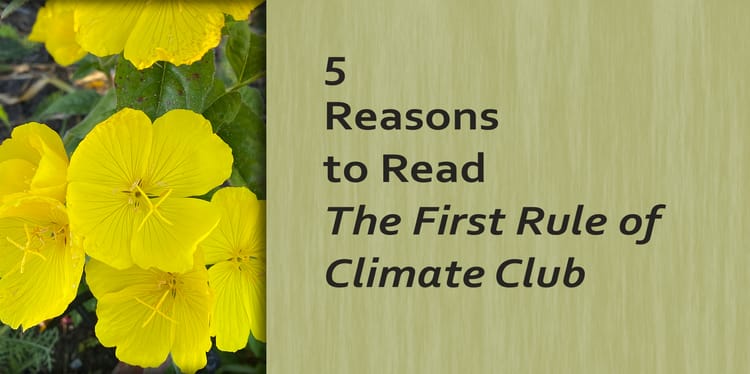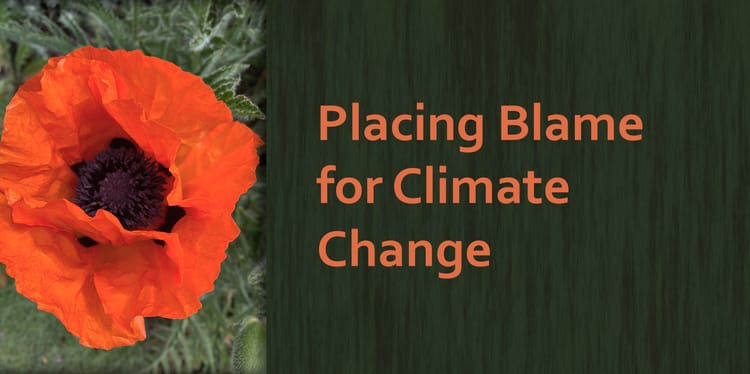Writing Disaster

When you are creating stories about climate change, disasters may loom large in the plot. The world is already experiencing disasters made more extreme or more frequent because fossil fuel emissions are heating the planet. Writing disaster into a novel is a way to increase tension and keep the pages turning. Writers must be aware, though, that there are pitfalls such as triggering a traumatic emotion in a reader who has experienced such an event.
Using myself as an example, I have not been able to finish the climate fiction book Ministry for the Future by Kim Stanley Robinson, a famous science fiction writer, because the opening chapters depict a wet-bulb heatwave event that is so gripping and vivid it made me sick. I had experienced the 116 degrees Fahrenheit heat dome in Portland, Oregon, in 2021. It was just too soon for me to read this story.

So, this post is not a review of Ministry for the Future, because I have not read it. Instead, I am looking at another story called Two Degrees written by Alan Gratz, a New York Times bestselling author of fiction for young people. I picked up this book because its title was too similar to the title of my upcoming climate fiction mystery which I have called One Degree. I needed to read the story to see what it was about. (*see postscript)
Gratz’s book is already a big success, and the author has a writing style that puts his characters in fast-paced plots with lots of peril. For Two Degrees, that means three different climate-related disasters: a forest fire, a hurricane, and an attack from a starving polar bear. The chapters read like an action movie.
It is a good book, but the main criticism I have of this story reveals another pitfall in writing disaster stories: unrealistic portrayals. With any book, the reader must suspend disbelief. This will always be relative to the reader’s expertise. If the reader knows more about the subject than the writer, it will not captivate them when implausible scenarios surface.

As someone who fought wildfires in my twenties while living in rural Northern California, I could see that Alan Gratz did not know much about western wildfires (and probably the editors and reviewers in New York did not either). The wildfire plot did not ring true for me because of my extensive experience. I was able to suspend disbelief with the other two plot lines because I have never been in a hurricane and never been to the Arctic. Unfortunately, the forest fire plot began the book, and first chapters are crucial to setting up the reader’s interest in a story. I almost put it down. I didn’t, though, overcoming my skepticism by realizing that the young middle grade readers this book was intended for would not have my knowledge and would easily get pulled into the plot.
I am not sure all young readers will enjoy this story. The danger is pervasive. As characters try to escape their plot disasters, the perils they encounter build and build to Hollywood levels of ongoing jeopardy that seem to never end and stretch the limits of credibility. Many young readers will love the adrenaline rush and keep turning the pages. For other children, it will be too much as they read about charred bodies or drowned victims.
This is a grim fact that children hear about on the news every day—people are dying from global warming right now—but still the threat may be something many children cannot stand imagining. Others will just need to find out if the protagonists escape so they can feel the relief that brings. Like with an action movie, readers will root for the characters to survive.
It is a very commercial formula that Gratz follows (see his trailer for confirmation of that), but that helps him sell his books. Still, the story has a lot of heart, which is why I think it has found success. Each protagonist in the three plot lines has a partner or two to share the struggle: a beloved horse, a stranger, a little grumpy dog, a best friend, and even the polar bear. These secondary characters help the main characters show empathy and caring as they attempt escape. Also, the ending provides a model for young people to speak out, which puts the story on a path to hope. Hope and heart are two ingredients I look for in climate fiction.
To sum up, what is a writer to do when writing disaster? First, consider the audience and what impact it may have on them. Second, do as much research as possible to make it as realistic as you can. Third, recognize that a book can never please everyone, which is why we need all sorts of climate fiction stories.
*PS: Titles are not copyrighted, so two identical or near-identical titles can legally exist, but this can create confusion among shoppers and generate negative comments that compare one book with the other. Not wanting my new book, One Degree, to be compared to Two Degrees, because they are in completely different genres, I have decided on a different title for my own climate fiction novel, which I will reveal shortly.





Member discussion